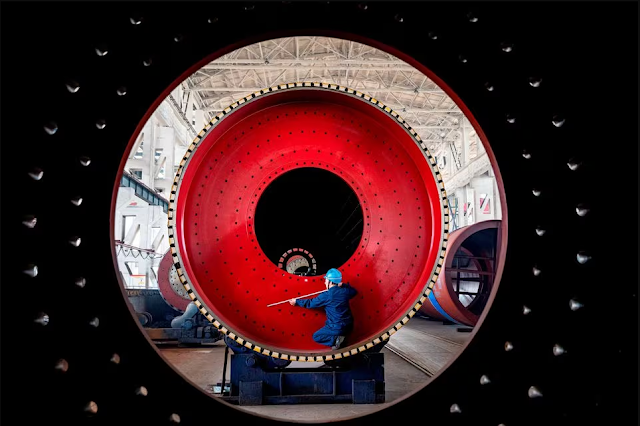
China's disappointing
post-Covid recovery has raised significant doubts about the foundations of its
decades of spectacular growth and presented Beijing with a stark choice for
2024 and beyond: borrow more or Grow less.
Expectations were that once
China lifted its strict COVID rules, consumers would again burst into malls,
foreign investment would resume, factories would reopen and land auctions and
home sales would resume. Stability will come.
Instead, Chinese buyers are
saving for rainy days, foreign firms have pulled out, manufacturers are facing
a drop in demand from the West, local governments' finances have sunk, and
property developers have defaulted.
The skewed expectations have
partly vindicated those who have always doubted China's growth model, with some
economists even drawing parallels with Japan's pre-bubble "lost
decades" of stagnation starting in the 1990s. Also pulled.
China skeptics say Beijing
failed to shift the economy from construction-based growth to consumption-based
growth a decade ago, when it should have done so. Since then, debt has
overtaken the economy, reaching levels that local governments and real estate
firms are now struggling to service.
China's policymakers vowed
this year to boost consumption and reduce the economy's reliance on property.
Beijing is guiding banks to shift more lending away from real estate to
advanced manufacturing.
But a concrete long-term
roadmap to clean up debt and restructure the economy remains elusive.
Whatever choice China makes,
it will have to account for an aging and shrinking population, and a difficult
geopolitical environment as the West grows wary of doing business with the
world's No. 2 economy.
Why is this Important?
China is likely to grow by
5% or more in 2023, outpacing the global economy. However, under that headline
is the fact that China invests more than 40% of its output – double that of the
US – suggesting that a significant portion of it is unproductive.
This means that many Chinese
do not notice this development. Youth unemployment hit 21 percent in June, the
last set of data before China halted controversial reporting.
University graduates who had
studied for advanced economy jobs are now working in low-skilled positions to
take a pay cut.
In an economy where 70% of
household wealth is held in real estate, homeowners are feeling poorer. Even in
one of the economy's few bright spots, the electric vehicle sector, the price
war is causing pain for suppliers and workers.

An employee measures a
newly manufactured ball mill machine at a factory in Nantong, Jiangsu Province,
China, on June 28, 2019.
Analysts say national
disillusionment could expose President Xi Jinping to threats to social
stability. If China slips into a Japan-style decline, it will do so before
achieving Japan-style growth.
This will be widely felt as
most global industries rely significantly on suppliers in China. Africa and
Latin America depend on China to buy their goods and finance their
industrialization.
What does this mean for 2024?
China's current problems
give it little time before it has to make some tough choices.
Policymakers are eager to
change the structure of the economy, but reform in China has always been
difficult.
A push to boost the welfare
of millions of rural migrant workers, who - according to some estimates - could
add 1.7% of GDP in household consumption if they had access to public services
like urban residents, social stability. are already on hold due to concerns
about and expenses.
China's efforts to address
its property and debt problems also come up against similar concerns.
Who pays for their bad
investments? Banks, government firms, central government, businesses or
households?
Economists say either of
these options could mean weaker future growth.
For now, however, China
seems reluctant to make choices that sacrifice growth for reform.
Now government advisers are
calling for a growth target of around 5 percent for next year.
While that's in line with
its 2023 target, it won't compare year-on-year with the disruption caused by
the lockdown in 2022.
Such a target could push it
into more debt — the kind of fiscal easing that prompted Moody's to cut China's
credit rating outlook to negative this month, pushing Chinese stocks to
five-year lows.
Where that money is spent
will tell us whether Beijing is changing its approach or doubling down on the
growth model many fear is heading its way.







1 Comments
Irfan
ReplyDelete